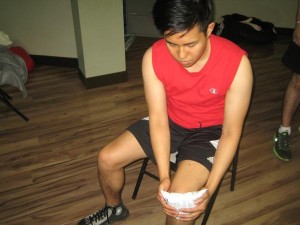The posterior cruciate ligament is vital in stabilizing the knee joint and preventing it from flexing back in the wrong direction. The cruciate ligaments in the knee include the anterior cruciate and posterior cruciate ligaments. It is important to note that the posterior cruciate ligament prevents the tibia from moving backwards. It also prevents the tibia from twisting outwards. Any damage to the ligament results to knee instability with the tendency of the tibia to sag backwards if the joint is bent at 90 degrees.
The incidence of posterior cruciate ligament injuries is low due to its better thickness and strength. The usual way it is damaged is from direct impact on the front part of the tibia, usually if the knee is bent. This is likely to occur during a front tackle or collision or falling with the knee bent.
What are the indications?
The indications of a posterior cruciate ligament injury include the following:
- Pain at the time of injury that later radiates to the calf area
- Swelling but usually minimal
Pain at the time of injury that later radiates to the calf area. - Joint instability that might be linked with a feeling that the knee is about to give away
- Pain is produced if the ligament is stressed by bending the knee in the wrong direction
- Positive result for the posterior drawer test and reverse Lachman’s test
Management for posterior cruciate ligament injury
After the knee is injured, apply the PRICE method (protection, rest, ice, compression, elevation). An ice pack and compression wrap must be applied right after the injury for 10-15 minutes every hour to minimize the pain and swelling.
In case the joint is swollen and painful, a full assessment is not possible. Once the discomfort and swelling has settled, the injury can be diagnosed. An X-ray or MRI is carried out to determine the extent of damage.
Conservative measures
Conservative measures include application of ice and heat, electrotherapy such as ultrasound and TENS, exercises and manual therapy.
A specific rehabilitation program is started which includes hamstring and quadriceps strengthening, balance training using a wobble board and gait re-education. A knee brace or support can be used in the early to middle phases. Take note that a hinged knee brace provides the ideal support for ligament injuries.
Surgical intervention
Some cases of posterior cruciate ligament injuries require surgery especially those that involve other structures inside the joint. If the conservative measures could not help with the stability of the knee over an extended period, surgery is also advised.
Disclaimer / More Information
The information posted on this page on a posterior cruciate ligament injury is for learning and educational purposes only. To learn to recognize and manage ligament injuries of the knee, register for first aid training at one of our training centers located throughout Canada. The training centers are in Edmonton, Calgary, Vancouver, Kelowna, Surrey, Winnipeg, Toronto, Ottawa and Halifax.

